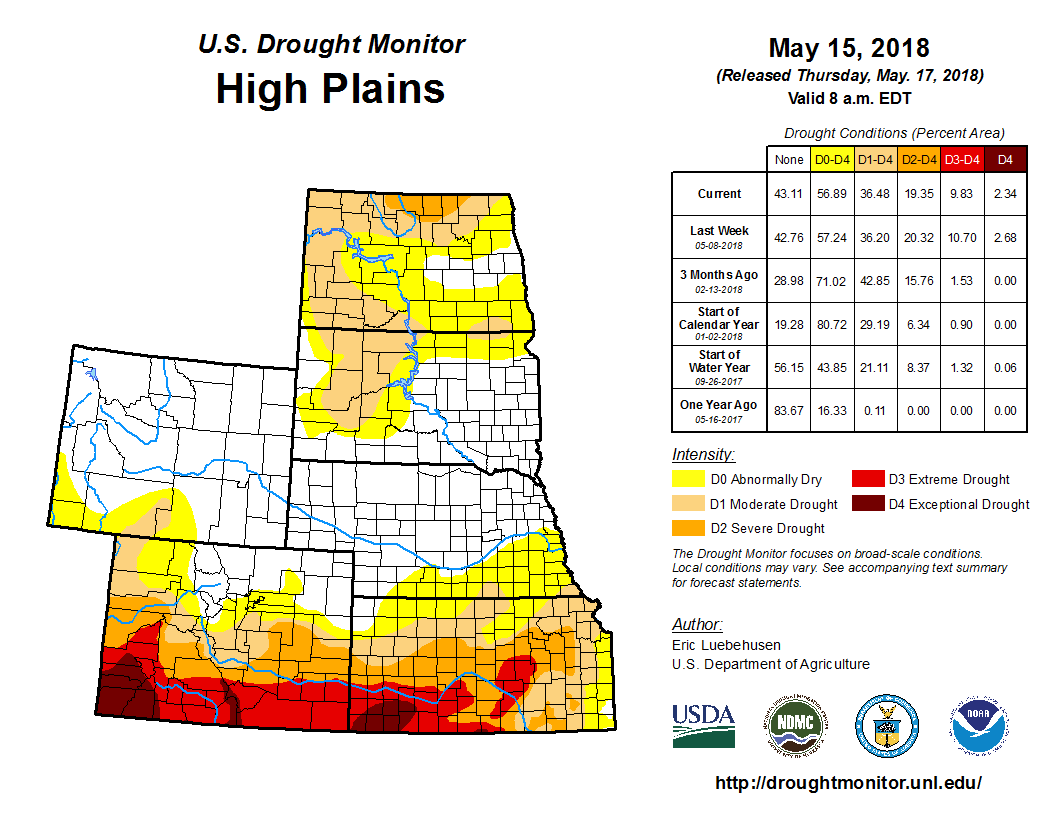Areas of moderate to heavy rain improve conditions in northeastern Colorado, central and southern Kansas
During the 7-day period ending May 15, areas of locally heavy rain provided drought relief from the Plains to the East Coast, though much of the Southeast was dry. According to the May 15 U.S. Drought Monitor released May 17, toward the end of the time frame, an influx of tropical moisture associated with a slow-moving disturbance generated heavy to excessive rainfall in Florida, with rain associated with this broad area of unsettled weather overspreading the Southeastern and Mid-Atlantic States after the data cutoff for this week’s analysis; any rain that falls after 8 a.m., EDT Tuesday will be incorporated into the following week’s drought assessment. In contrast, dry, hot weather maintained or exacerbated drought from the southern High Plains into the Southwest. Likewise, despite the generally unsettled weather pattern, pockets of dryness and drought lingered or intensified in the Upper Midwest and northern Plains.
The overall trend toward improving conditions in the south contrasting with increasingly dry weather in the north continued in the High Plains. From northeastern Colorado into central and southern Kansas, areas of moderate to heavy rain (1 to 3 inches) netted reductions in drought intensity and coverage. The most significant improvements were made in south-central Kansas, where a large area of 2 to 4 inches of rain (locally more) fell on areas of Severe (D2) to Extreme (D3) Drought. Moderate to heavy rain (1 to 3 inches) was similarly beneficial in northeastern Colorado, trimming the aerial extent of Abnormal Dryness (D0) and Moderate Drought (D1). Farther north, outside of locally beneficial downpours (1-3 inches) in northwestern South Dakota, acute short-term dryness over the past 30 days resulted in expanding D0 across southwestern South Dakota, southeastern North Dakota, and northeastern Montana, while a more prevalent dry signal over the past 90 days (50 percent of normal or less) led to expanding D1 and D2 in northeastern North Dakota.



